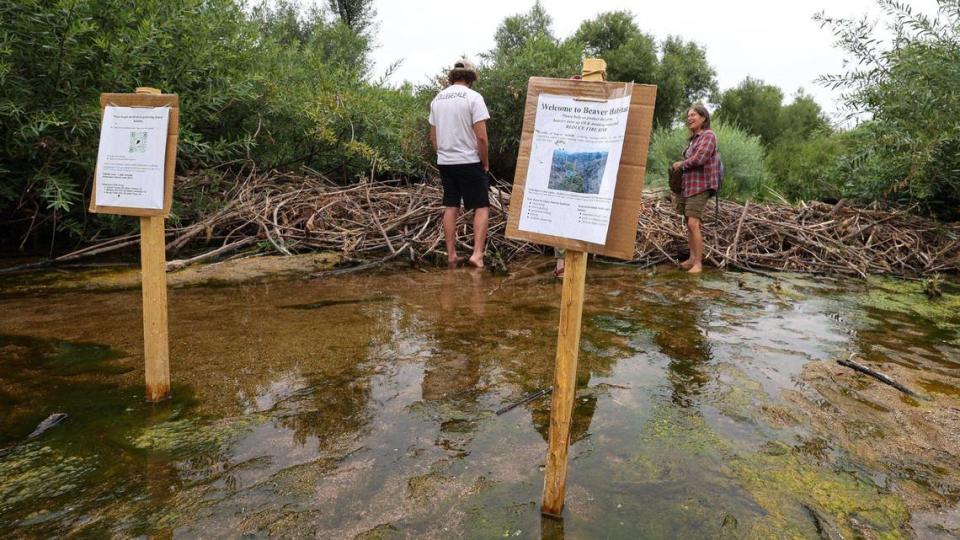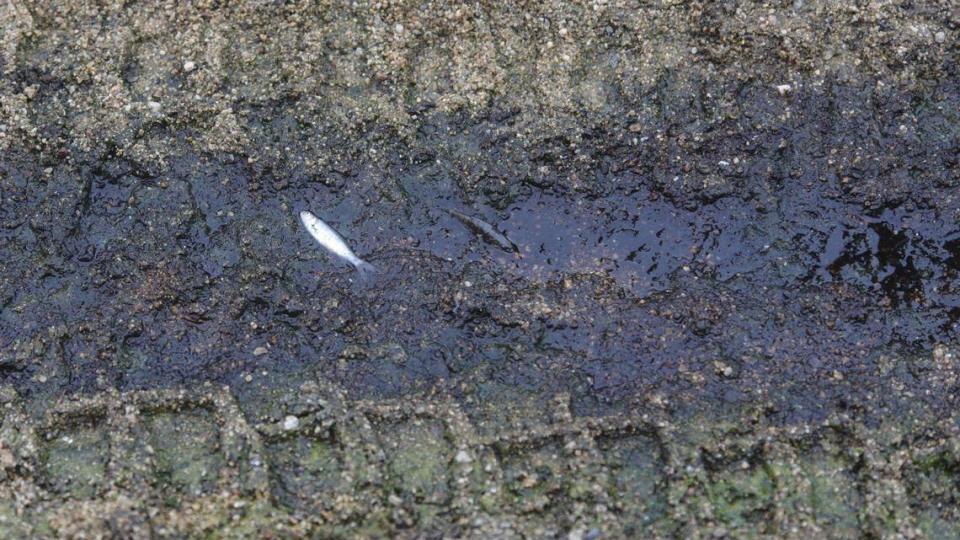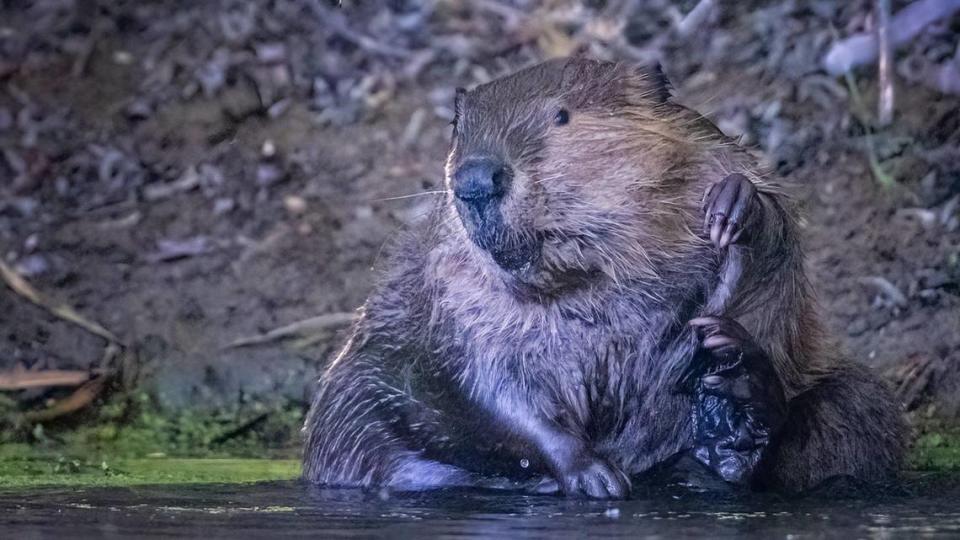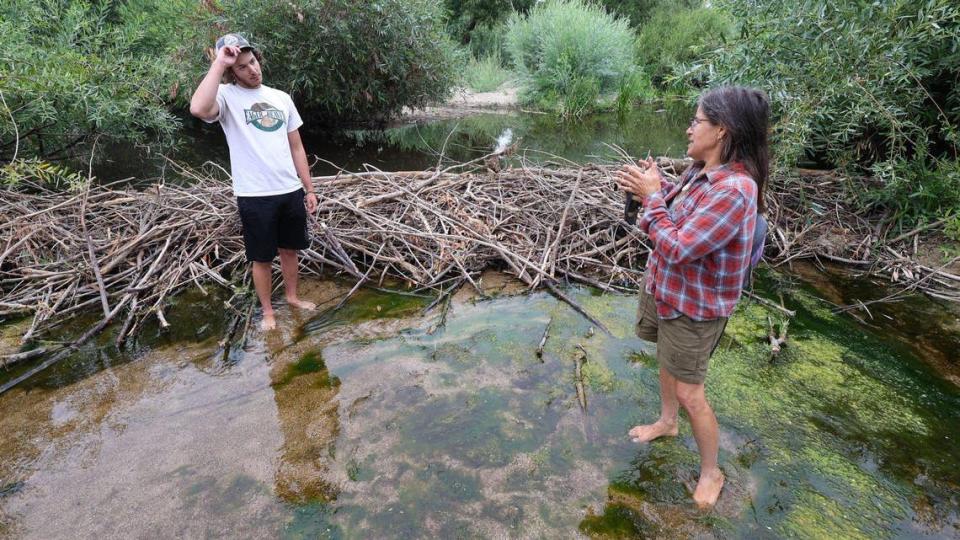Off-roaders damage SLO County beaver dam as battle over Salinas River brews
Through a game camera tucked sneakily in the brush on the Salinas River in Atascadero, researchers could see an entire ecosystem be rebuilt after intense winter storms ravaged the landscape.
In June, a small beaver family gathered sticks from nearby willow trees and constructed a dam to slow the flow of the river and create a pond that would provide habitat for a plethora of wildlife, improve down-river water quality and help recharge the area’s groundwater basin.
In mid-July — about six days after the beavers seemed to have completed their engineering feat — the game camera captured the loud snapping of sticks and a car’s roaring engine as it cut through the evening silence, its driver revving it up in an attempt to drive over the dam.
After the unsuccessful attempt to drive over the dam, the passengers then got out of the car and began tearing apart the beaver dam with shovels.
Removing the dam would allow the upstream area to dry out so they had more area to drive, the men told Audrey Taub, executive director of the San Luis Obispo County Beaver Brigade, when she confronted them.
They said they knew taking down part of the beaver dam would dry out some upstream sections, because they’d been frequenting the area for more than two decades, according to dialogue of the confrontation captured on video by Taub and shared with The Tribune.
“I really think that the river can be shared,” she could be heard telling them in the video.
“Why don’t you take the trail?” Taub then asked. “There are so many trails.”
“Well, because that’s city property,” said the man, whose identity was not shared with The Tribune.
In Atascadero, it’s illegal to drive in riparian corridors, which are the ecosystems surrounding rivers and creeks.

The mid-July incident between the Beaver Brigade and off-road drivers in the Salinas River is nothing new: Tensions between the off-highway vehicle users and nearly everyone else who uses the river have been high for years.
Equestrians complain because the loud engines spook their horses; hikers worry about the cars ripping quickly around blind corners.
“We’ve been struggling with OHV on our property for years,” said John Neil, general manager of the Atascadero Mutual Water Company. “They tear up the riparian environment next to the river. They tear up our access roads. They don’t mix well with the other uses.”
Taub and Cooper Lienhart, restoration director at the nonprofit, Beaver Brigade, are trying to find a way the drivers and beavers can co-exist in the Salinas River.
The two, alongside family and friends, have attempted to improve driving trails in the riverbed to route drivers away from the beaver habitat. Signs and yellow caution tape marking off the sensitive habitat are often driven over or destroyed shortly after being placed, they said.
“We’d ideally not have vehicles at all in the watershed, this environment is so important,” Lienhart said while walking barefoot up the Salinas Riverbed toward the rebuilt beaver dam. “But if (off-road drivers) have to be here, they just shouldn’t be in our wildlife refuges.”

Enforcement of off-roading ban in river area difficult, police say
Enforcing the city’s ban on driving in the Salinas River’s riparian corridor is extremely difficult, said interim Atascadero Police Chief Joe Allen.
“We don’t have the resources, the staff, to be out there patrolling for these guys,” Allen said.
Should a complaint be called to the police department regarding off-highway vehicle users at the Salinas River, Allen said the police department could respond and may issue tickets if they find the drivers.
If it’s the driver’s first offense, however, Allen said the department would likely just issue a warning.
“And that’s worked a lot of times,” he said. “But obviously they’re still out there.”

California Department of Fish and Wildlife wardens have also been called out to respond to incidents of drivers damaging the beaver dams. It’s illegal per state code to harass wildlife.
However, the agency has seemed to take a similar approach to the police department: education before citation.
“A CDFW wildlife officer did respond to a call for service in the Salinas River,” wrote Ken Paglia, a spokesperson for the department, in an email to The Tribune. “But as of now a citation has not been issued and the investigation is ongoing.”
Protecting beavers has many ecological benefits
Taub said she doesn’t necessarily want the drivers to get tickets for their driving in the Salinas River area — she just wants them to stop driving in beaver habitat.
“We really need to value our rivers and watershed,” she said.
To many, beavers may still be synonymous with pests.
The furry rodents march around throughout the night, trimming trees and creating ponds that could flood nearby properties.
But there are easy defenses against beavers destroying property, Taub said, such as lining trees with wire or putting a tube through the dam to keep the pond at a certain height.
Defending the Salinas River beavers is vital to fighting climate change’s impacts on the river’s ecosystem, said Emily Fairfax, an assistant professor of geography at the University of Minnesota.
Fairfax has studied the beavers in the Salinas River area for about three years — cataloging their behavior, noting where they build dams and observing the impacts of their activities.
“Beavers are creating habitat in an area that was otherwise ecologically degraded,” she said. “Even during periods of drought when other parts of the Salinas River were dry, the beaver ponds stayed there and had water.”

Having water through the hot, dry summers is vital for fish and other wildlife to survive, she noted. About 80 species of wildlife — including bobcats, great blue herons, skunks, woodpeckers, crayfish, foxes and weasels — were observed through the Beaver Brigade’s game cameras.
The areas around beaver ponds also typically grow to be incredibly fire resistant because of the persistent water source, Fairfax said.
The improved habitat provides an excellent spot for fishing and hunting, Fairfax noted, because of the wildlife drawn to the area and the large fish often found in beaver ponds.
Plus, the water in beaver ponds often seeps slowly down into the groundwater to help bolster the supply even during drought months, she added.
“We can co-exist with beavers,” Fairfax said. “It’s really important we find a way to do so.”

